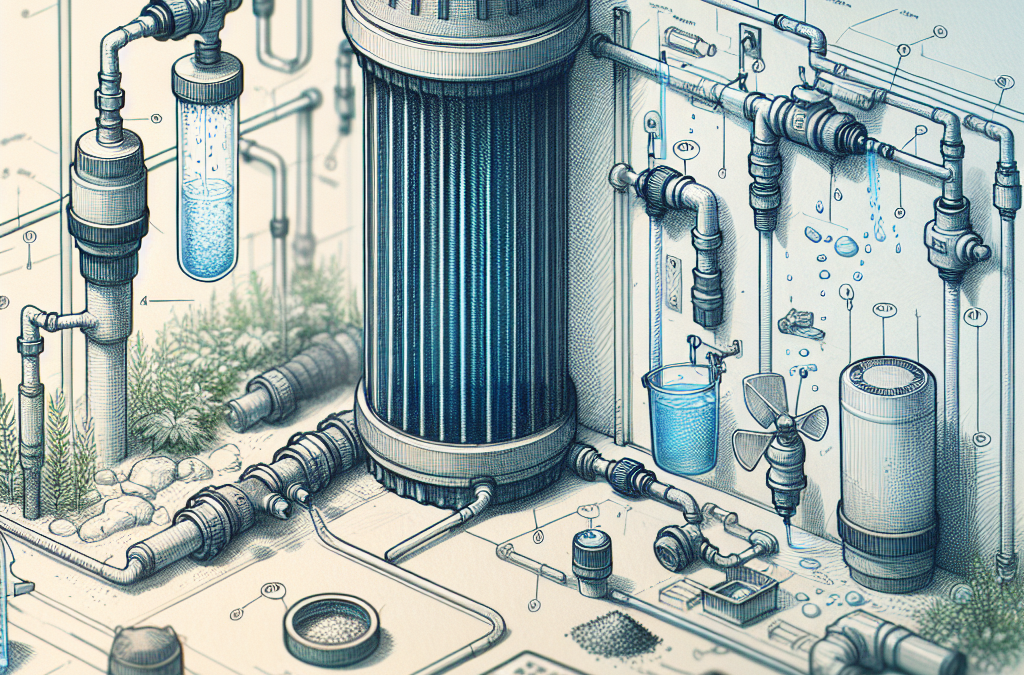Understanding Greywater Systems
What is Greywater?
So, let’s kick things off by chatting about what greywater actually is. It’s the water that comes from our sinks, showers, and washing machines—not the water from toilets, which is known as blackwater. This water often contains soap, food particles, and a bit of dirt, making it useful for watering plants and lawns.
Now, while you might think of greywater as dirty, it’s pretty harmless compared to other forms of wastewater. Plus, understanding this type of water is the first step in making your own recycling system at home. You’re basically turning what could be waste into a resource!
When we implement greywater systems, we’re embracing eco-friendly practices that reduce our water consumption significantly. It’s a great way to conserve water, especially in areas where drought is a problem. Imagine watering your garden with the same water you used for your shower!
Benefits of a Greywater System
Water Conservation
One of the biggest perks of setting up a greywater system is water conservation. Using household greywater for irrigation can cut down your water bill and help conserve this precious resource. We all know how precious water is, and being proactive about saving it feels really good!
By recycling this water, you’ll be making your household more sustainable and lowering your environmental impact. This not only contributes to your savings but also promotes a healthier planet. And who wouldn’t want to be a part of that?
Plus, the conservation aspect becomes especially crucial during hot summer months when water is at a premium. Seeing those plants thrive with your homemade system is super rewarding and gives me a sense of pride as a responsible homeowner!
Components of a Greywater System
What You Will Need
Alright, let’s talk about the nuts and bolts of building your greywater system! First off, you’ll need some essential components, like piping, a tank, and a filtration system. You can start small, even with just a bucket, but if you’re looking to make it more permanent, investing in pipes and tanks will really pay off.
Don’t forget about fittings, which will connect everything together. So, let’s say you’ve got a washing machine that discharges a good amount of water. You can grab some flexible hoses and run them directly into your garden, with a filtration system to remove larger particles. Simple, right?
Finally, tools! A good handsaw, wrench, and drill will help you assemble your setup without a hitch. I remember fumbling around with tools on my first DIY project, but trust me, with practice, you’ll be a pro in no time. Just be careful while handling everything!
Setting Up Your System
Step-by-Step Installation
Now to the fun part—setting up your greywater system! Start by designing your layout. Are you using a tank? Do you want it to be a direct discharge into your garden? Sketch out your plan, making sure to consider the location of your water sources.
Next, I like to mark where the pipes will go. Measure twice; cut once, right? We don’t want any leaks or issues down the line! Once it’s all laid out, assemble the pipes and fittings. I can’t stress enough how satisfying it is to see everything come together.
Finally, don’t forget about testing the system! Turn it on and watch how it performs. Initially, you may want to redirect it into a bucket to ensure everything is functioning smoothly before you officially set it loose into your garden.
Maintenance and Troubleshooting
Keeping Your System Running Smoothly
Every system needs some TLC now and then, right? With your greywater system, regular maintenance is key. Check for clogs regularly, especially in the filtration system, and clean it out if needed. A clean system means healthier plants!
It’s also vital to monitor the pipes and fixtures. Over time, wear and tear can cause issues, so inspecting everything can save you from bigger, more costly problems down the road. Trust me; it’s easier to address small issues rather than wait for something major!
If you find something isn’t working as expected, don’t panic! Sometimes, it’s just a minor fix or a forgotten adjustment. Revisit your setup and make tweaks as needed. And remember, it’s all part of the learning experience!
Frequently Asked Questions
1. Is greywater safe for my plants?
Yes, greywater can be safe for your plants, especially if you avoid using harsh chemicals in your household cleaning products. Always research what plants are best for greywater to ensure optimal health.
2. How do I know which water to use in my greywater system?
Generally, water from sinks, showers, and washing machines is considered greywater. Avoid using water from dishwashers or toilets, as they are classified as blackwater.
3. Can I connect my greywater system to the municipal sewer system?
In most cases, greywater systems should be set up to operate independently of the sewer system. Always check local regulations and codes before installing your system.
4. Do I need a permit to install a greywater system?
This varies by location. It’s always best to check with your local municipality regarding regulations surrounding greywater systems before installation.
5. What happens if my greywater system has an odor?
Odors often indicate that something is amiss. Check for clogs or stagnant water. Proper maintenance should prevent odors, but if you do experience issues, it might be worth consulting with a professional.





